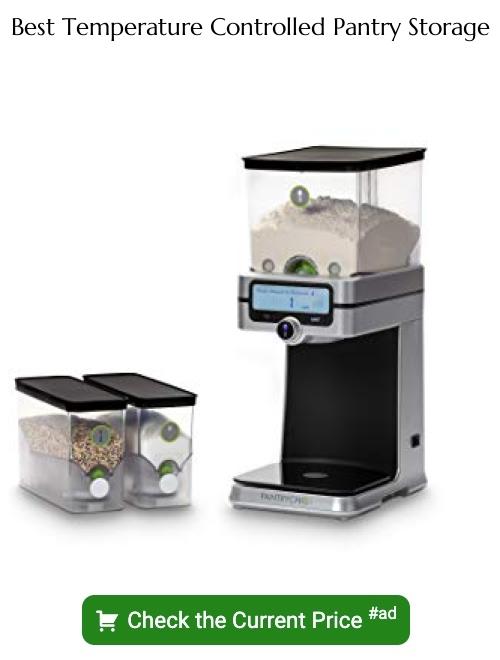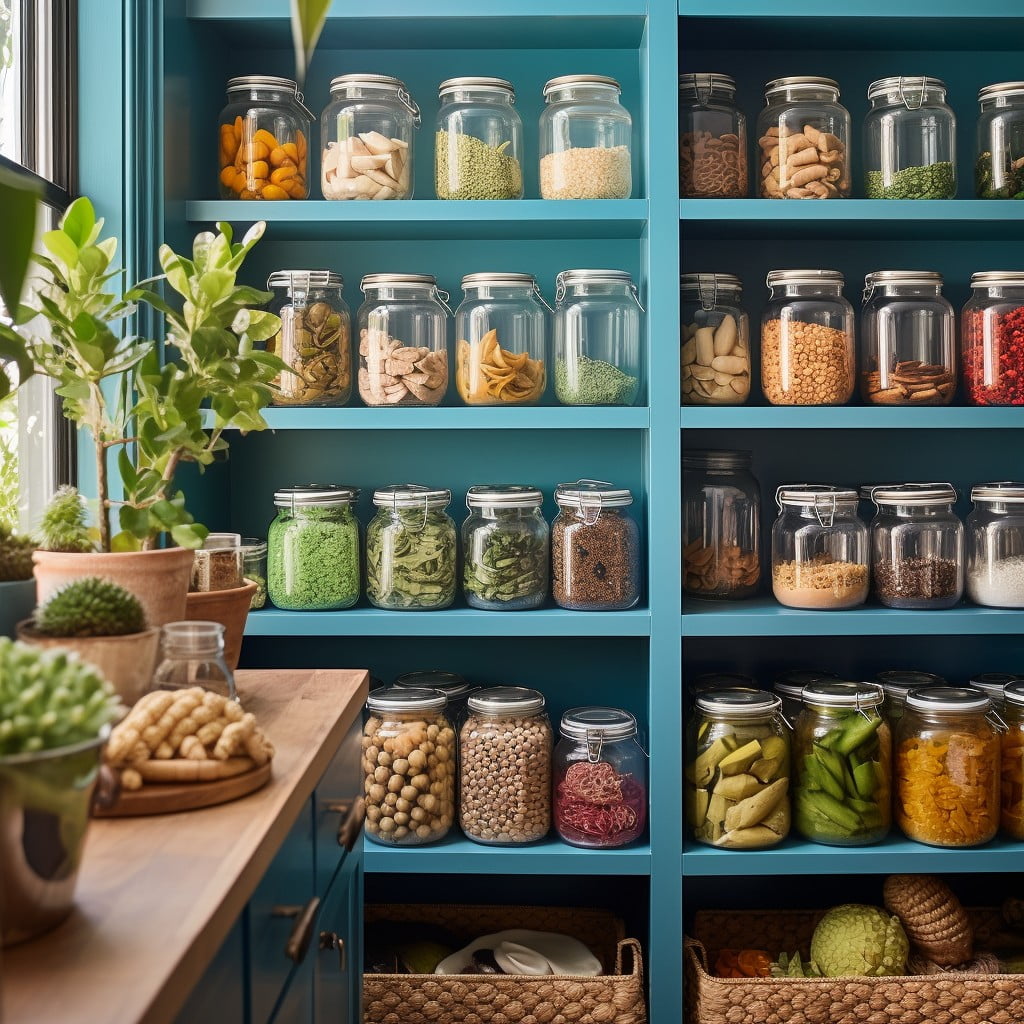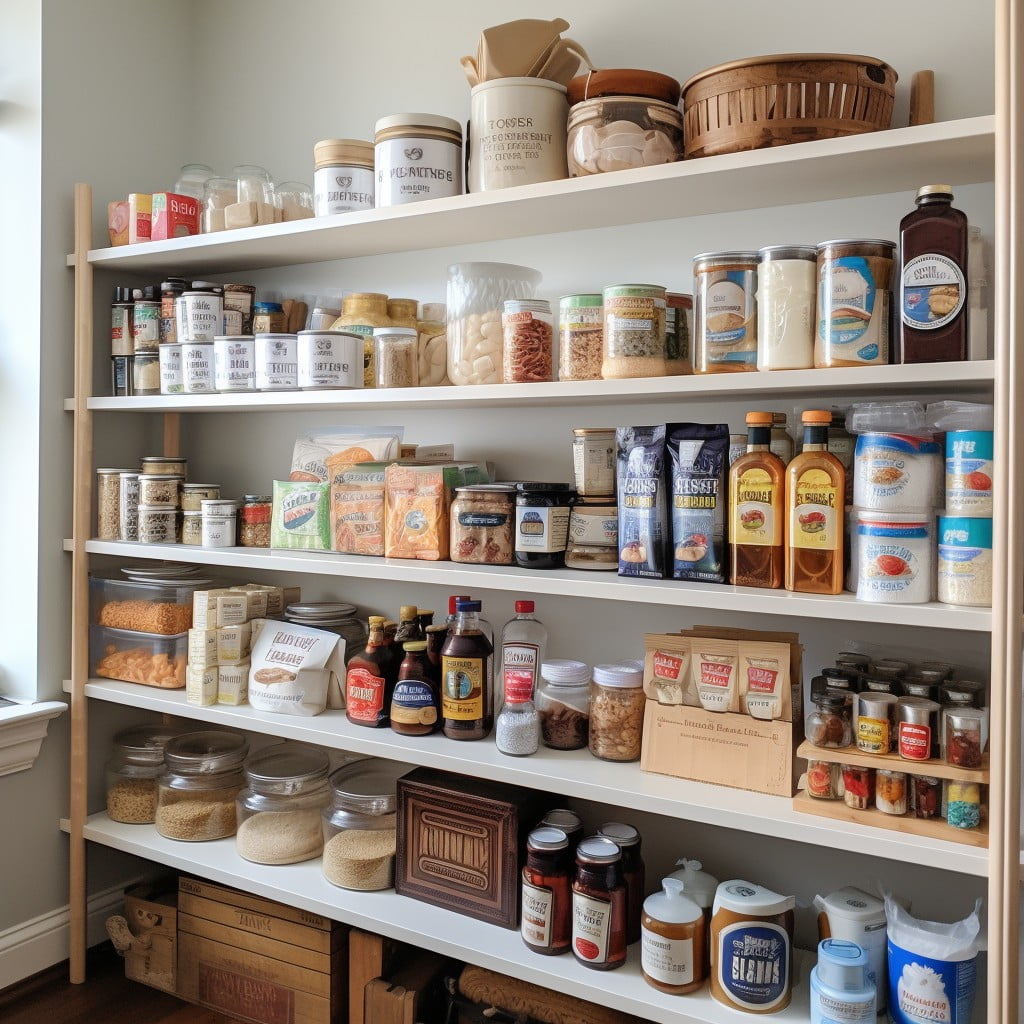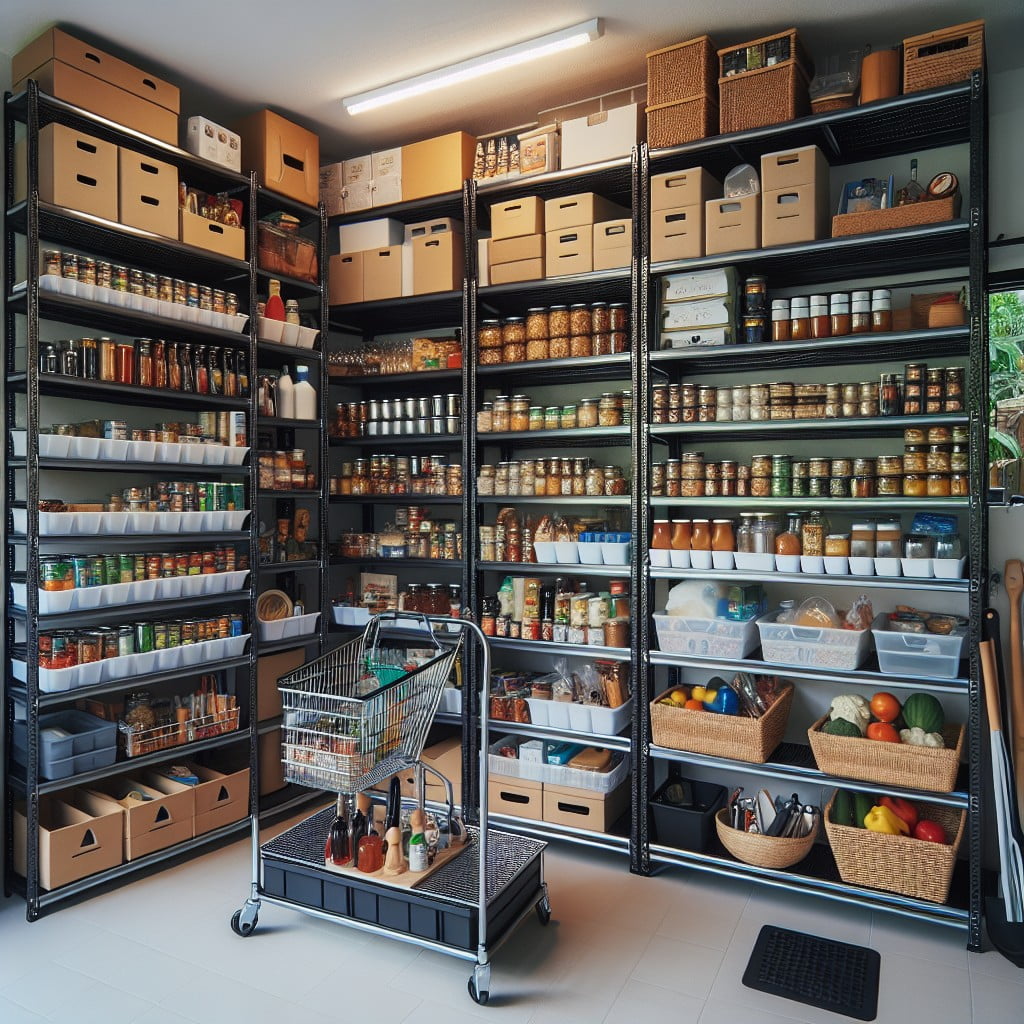Last updated on
Discover the revolutionary benefits of a temperature-controlled pantry because it offers the perfect environment for the storage of various food items, enhancing their freshness and longevity.
Crafting a temperature-controlled pantry is a game-changer for any home, providing an optimal storage environment for your perishables. This article covers every aspect of setting up such a pantry, from why temperature control is essential to a step-by-step guide on how to build one.
You’ll delve into the science behind safe food storage and find tips for maintaining ideal conditions—all to ensure your pantry isn’t just elegant, but practical and health-conscious too.
Unearth different cooling techniques, discover potential pitfalls to avoid, and pick up some insights from experts in the field. Everything you need to know about creating a temperature-controlled pantry is right here.
Enjoy the journey towards a better-optimized kitchen space. Stay tuned!
Key takeaways:
- Maintaining a cool, stable temperature extends shelf life.
- Pest control is easier with controlled temperatures.
- Temperature fluctuations can affect taste and texture of food.
- Proper temperature reduces unnecessary food waste.
- Regular monitoring helps ensure optimal food storage conditions.
Importance of Temperature Control in a Pantry
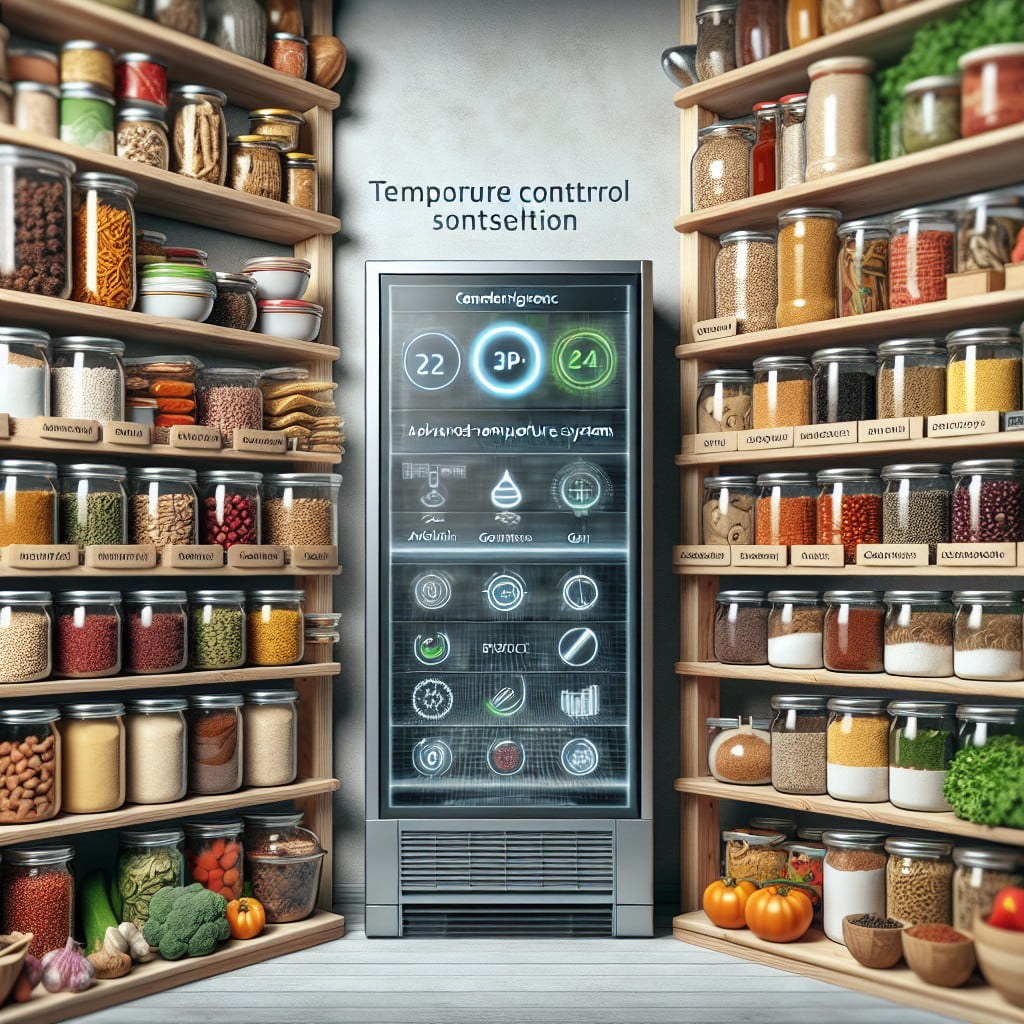
Controlling the temperature is paramount in maintaining the quality and enhancing the lifespan of your pantry staples. It’s an essential variable in food preservation, where the aim is to retard the growth of bacteria that spoils food. A well-regulated pantry temp can deter pests, preventing infestation and food contamination. Let’s look at why this matters.
1. Food Preservation: Many pantry foods have specific temperature and storage requirements. Maintaining a cool, stable temperature around 50-70°F helps extend the shelf life of items like canned goods, cereals, and spices.
2. Pest Control: Pantries can attract pests like rodents and insects. Controlling the temperature makes the environment less comfortable for these creatures, reducing the risk of infestation.
3. Quality Maintenance: Temperature can affect quality. Fluctuations can cause condensation, potentially damaging packaging and affecting the taste and texture of food items.
4. Reducing Waste: Proper pantry temperature not only helps in preserving food but also reduces unnecessary food waste, saving money in the long run.
Understanding and implementing temperature control enhances your pantry, contributing to a safe, healthy, and efficient kitchen.
Temperature Standards for a Pantry
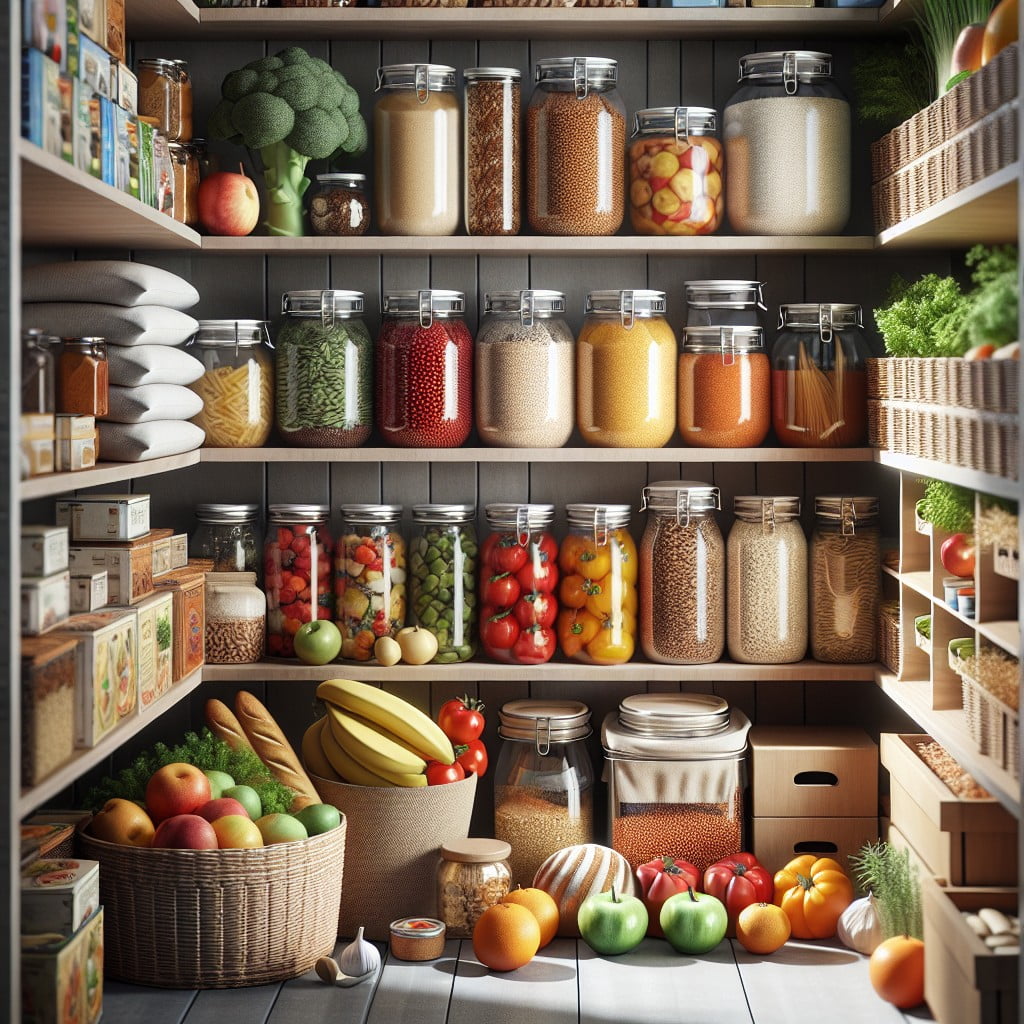
To store food safely and effectively, it’s crucial to maintain a consistent environment for your pantry. Keep your pantry between 50 and 70 degrees Fahrenheit for optimal results. Here’s why:
1. Preventing Food Spoilage: Most bacteria cannot survive in cooler temperatures, reducing the risk of food spoilage and increasing shelf life.
2. Maintaining Food Flavor: Certain foods like spices, nuts, and oils can lose their flavor when exposed to high temperatures, effecting their overall quality.
3. Regulating Insect Activity: Most bugs are inactive at lower temperatures, which helps to keep them away from your food containers.
4. Ensuring Dryness: Cooler temperatures ward off excessive moisture, which can lead to mold and mildew, particularly dangerous for food storage.
Remember, a well-regulated pantry can contribute significantly to your food preservation endeavors.
Managing Humidity for a Temperature-Controlled Pantry
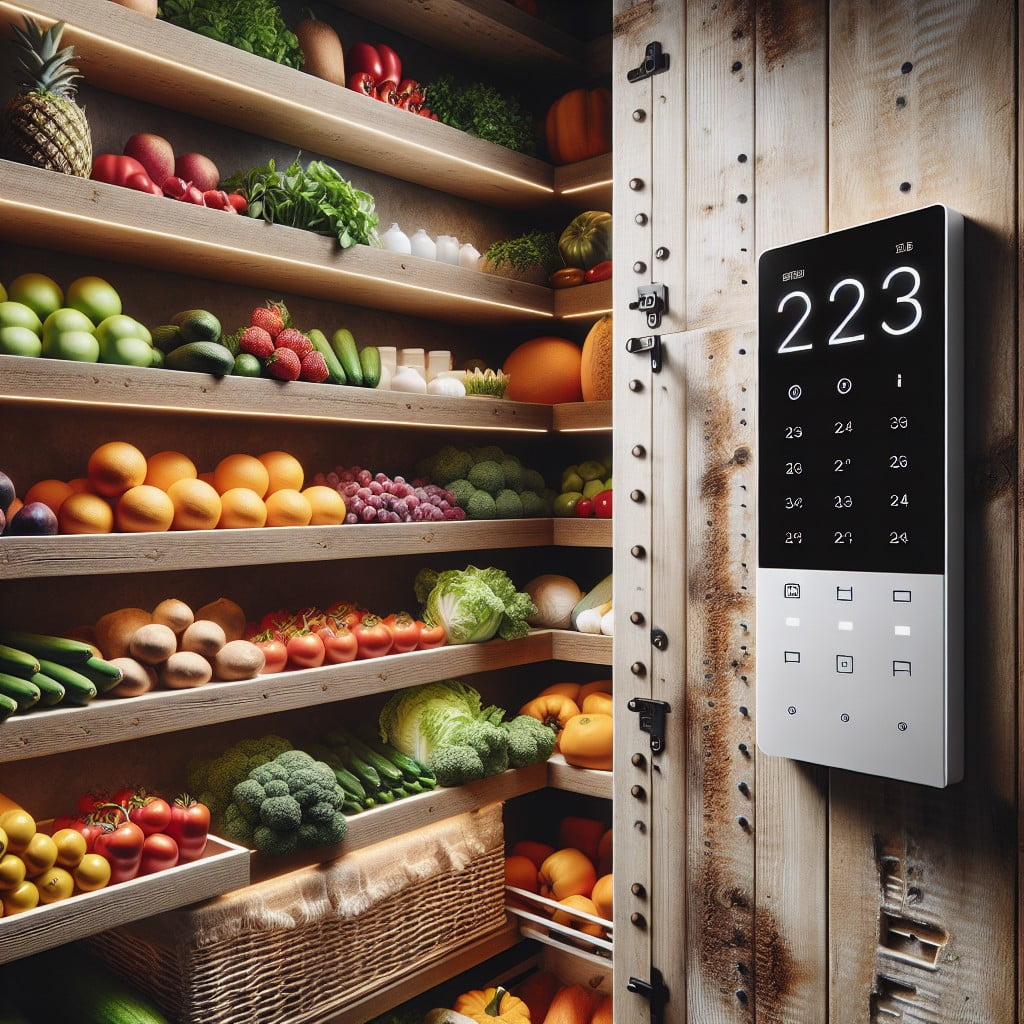
Ensuring ideal humidity levels is key in a pantry environment. High humidity exacerbates the risk of mold or bacterial growth, while excessively dry conditions can prematurely degrade the quality of certain food items.
Here are a few ways to manage moisture levels effectively:
- 1. Ventilation: Proper airflow can help prevent moisture accumulation. Installing grates, vents, or perforated cabinet doors can significantly improve air circulation.
- 2. Dehumidifiers: These devices remove excess humidity from the air, keeping your goods safe from spoilage.
- 3. Hygrometers: These instruments measure the amount of moisture present in the air, allowing you to monitor humidity levels.
Remember, for most pantry staples, the recommended relative humidity ranges from 50–60%. Mind the specifics for each food item, as some require particular conditions to stay fresh the longest.
Advantages of Streamlined Shelves for Pantry Temperature Control
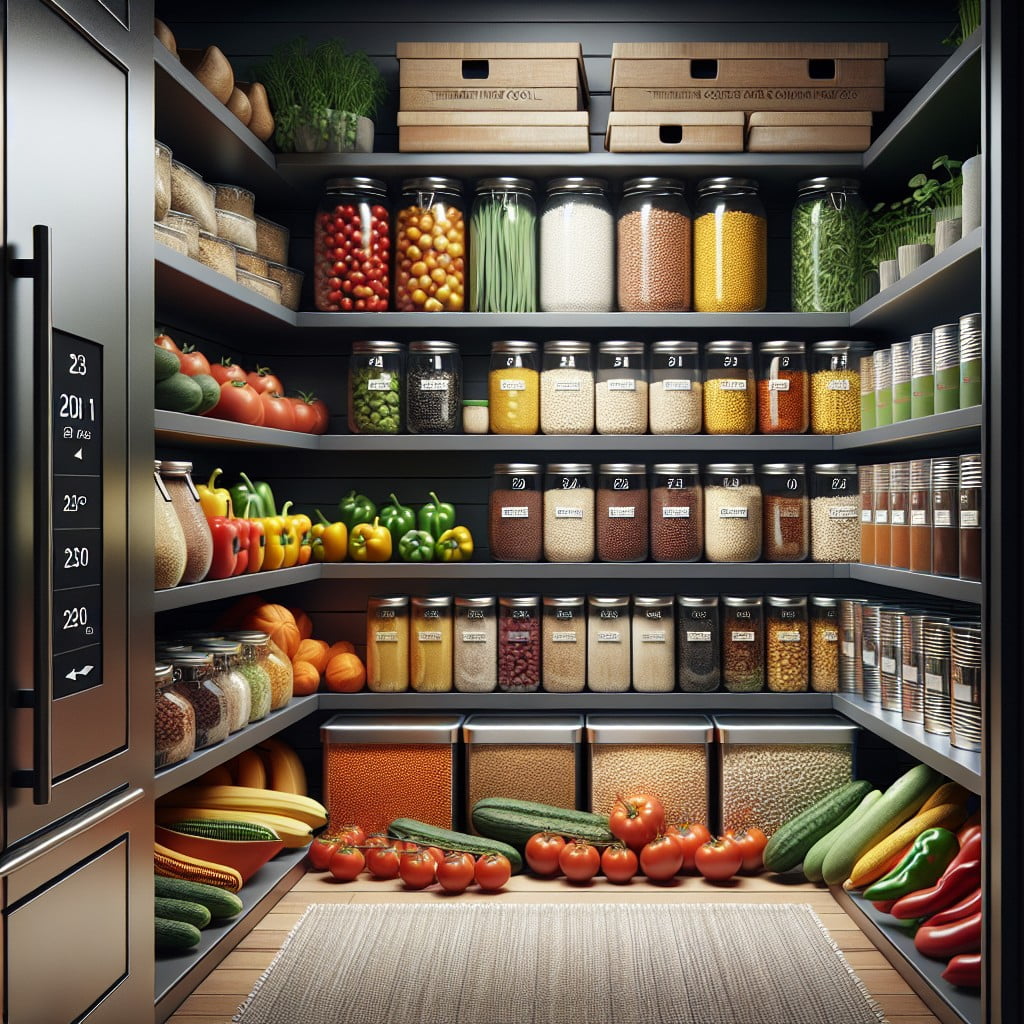
Streamlined shelves ensure efficient airflow, a critical aspect of maintaining a consistent temperature. Where bulky or overcrowded shelves restrict circulation, a streamlined layout facilitates an even distribution of cool air. This setup reduces the likelihood of hot spots which cause spoilage.
Optimum shelf placement is also paramount. Using adjustable shelving, rearrange to make taller spaces for larger items and shorter ones for small packages. This maximizes room without sacrificing airflow.
Another tip that saves on energy consumption is to keep heavier, bulkier items at the bottom. The structure allows cooler air, which naturally descends, to be easily distributed.
Additionally, streamlined shelves contribute to easy visibility and accessibility. This reduces the duration that the pantry door is open, effectively minimizing warm air intake. Also, an organized setup helps in keeping track of items prone to expiration, thus reducing waste.
Remember, a well-arranged shelf is not just pleasing to the eye, it also plays a significant role in ensuring your pantry maintains a controlled temperature for optimal food storage.
Monitoring Pantry Temperature Daily
Ensuring that the pantry maintains an ideal temperature daily is necessary for optimal food storage conditions. This can be achieved through various means:
- Use a food storage thermometer: Keep it in a visible spot that you frequent daily. This allows you to spot any fluctuations swiftly and take corrective action.
- Digital thermometer: This is a step up from the analog version. Digital thermometers can provide more precise temperature measurements.
- Smart Home devices: Incorporating a smart home system, such as a home assistant, can continuously monitor temperatures and alert you to any changes.
- Regular checks: Apart from devices, simply being observant can also help. Look out for signs like condensation or unusual smells that indicate temperature fluctuations.
- Install a Hygrometer: To get an accurate reading of both temperature and humidity levels in your pantry, install a hygrometer alongside a thermometer.
Remember, keeping a steadfast eye on the temperature helps preserve the longevity of your stored goods by ensuring they are kept at consistent conditions. Regular checks are just as important as having the right pantry design or storing items correctly. It’s an integrated process, where each element plays its part.
Pantry Temperature Control Hacks for Optimal Food Storage
Effective pantry temperature management is essential in preserving the quality, taste, and nutritional value of food items. Here are some tips to help optimize your pantry’s temperature for better food storage:
1. Install a Digital Thermometer: This allows for precise monitoring and adjustment of your pantry’s temperature in real-time. Aiming for the recommended 50-70°F range can greatly prolong the shelf-life of your stored goods.
2. Use Insulated Containers: These are ideal for storing temperature-sensitive items like chocolate, as they maintain a steady temperature and prevent spoilage.
3. Keep Away from Appliances: Placing your pantry away from heat-generating devices like ovens and dishwashers prevents temperature spikes that could spoil your food.
4. Use Thermal Curtains: Installing these on your pantry windows can block out excess heat or cold, ensuring a more consistent temperature throughout the year.
5. Rotate Stock: Regularly moving older items towards the front of the pantry (older items may be more susceptible to temperature changes) can help maintain freshness.
6. Apply Weatherstripping: This seals gaps in doors and windows, minimising the entrance of outside air and helping to stabilise pantry temperature.
By implementing these simple hacks, you can ensure your pantry is well-optimised for temperature-controlled food storage.
How to Increase Ventilation in a Pantry
First and foremost, consider the pantry’s location and layout. Increase air circulation by installing vents, especially if the pantry is near a heat-producing source like an oven. Another strategy includes incorporating a fan or dehumidifier, but ensure it doesn’t overly dry out certain foods since this can lead to premature spoilage.
Always keep the pantry door ajar if possible, akin to how propped-open wine cellar doors enhance ventilation. More viable options include louvered, sliding, or screen doors that promote airflow, unlike standard solid doors.
Also, avoid overstocking shelves. Leave room between items, helping air to circulate around them, controlling the temperature more efficiently. Shelving units with open wireframes instead of solid surfaces are optimal for maximizing airflow as well.
Finally, consider installing a small extraction fan near the top of your pantry. Heat naturally rises, so this fan will expel warm air from the pantry, drawing in cooler air from lower sections. This technique ensures all areas within your pantry are adequately ventilated and maintain an optimized, consistent temperature.
FAQ
What is the ideal temperature for a pantry?
The ideal temperature for a pantry ranges from 50 to 70 degrees Fahrenheit.
What is the temperature and humidity controlled pantry?
A temperature and humidity-controlled pantry is a storage space designed to maintain the optimal conditions for preserving various foods, with temperature settings ranging between 32 to 70 degrees Fahrenheit and humidity levels between 80% to 95%.
How does temperature affect the quality of food in a pantry?
Temperature significantly impacts the quality of food in a pantry as too high temperatures can accelerate spoilage, while too cold can affect food texture and taste.
What are some effective methods for maintaining humidity control in a pantry?
Effective methods for maintaining humidity control in a pantry include installing a dehumidifier, using moisture absorbers, ensuring proper ventilation, and storing food in airtight containers.
Are there any specific pantry items that require stricter temperature control?
Certain pantry items such as oil-based products, canned goods, and certain condiments should be stored in a cool, dry area, ideally below 70 degrees Fahrenheit, to maintain their quality and prevent spoilage.
Liked reading this? Here’s more:
Recap:
